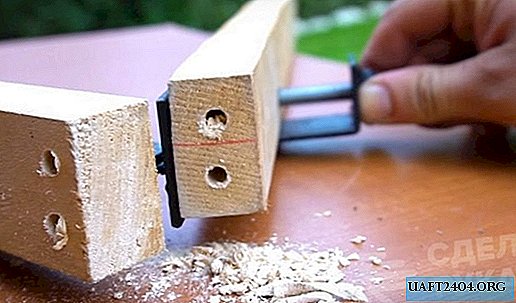Share
Pin
Tweet
Send
Share
Send
This article contains step-by-step instructions for making a mask, accompanied by examples for a better understanding.
1. The sketch.
Draw a sketch that will contain all the details of the future face to facilitate subsequent work. If it is planned that some unusual details will be on the face (clown nose, lack of nose), you need to display this on the sketch and, if possible, calculate the size of these changes.
For reference: approximately the face of a person has a size of 24 by 16.5 cm.
2. The layout of expanded polystyrene.
- From three pieces of 40 mm polystyrene foam cut ovals the size of the desired face. For cutting, a blade from a hacksaw for metal is suitable.
- Glue the resulting shapes together using PVA glue. Apply glue closer to the middle and not around the edges.
- Give the layout an approximate shape of the face (without nose, eyes, etc.).
- Strip fine sandpaper (number 240) the resulting layout.


For reference:
- Instead of polystyrene foam, foam is also used, but it crumbles heavily.
- Ponepolystyrene and polystyrene can be purchased at hardware stores.
- You can use expanded polystyrene of smaller thickness, but then it is necessary to make more layers (for a thickness of 20 mm, 6 pieces are needed, etc. The total thickness should be approximately 120 mm or 12 cm).
3. The application of sculptural clay.
- Plasticize the layout, then fashion the facial features.
- From the most convex parts of the face, it is necessary to cut off a layer of plasticine so that with further coverage of papier-mâché these areas do not look bulky.
For reference: instead of sculptural plasticine, color is used.


4. Papier-mâché coating.
Wrap the workpiece with cling film or, in its absence, grease with vegetable oil (this is done in order to subsequently make it easier to separate the workpiece from papier-mâché).
Apply papier-mâché to the workpiece.
- Leave the mask to dry for approximately 48 hours.
- Separate dried papier-mâché from plasticine and expanded polystyrene.

For reference:
- Instead of papier-mâché, polymorphus is used, in addition, it dries less.
- If papier-mâché is not available, you can make it at home.
To do this, glue, toilet paper and a little soap.
- Tear toilet paper into small pieces.
- Pour water into the pan, put it on the fire and put pieces of toilet paper in it.
- Stir while waiting for the water to boil.
- Put a towel on the sink and carefully pour the contents of the pan onto it. Steam is hot!
- After cooling the resulting mass, wrap a towel around it and squeeze it well.
- Add PVA glue and a little soap to the resulting mass so that it does not stick to your hands.
5. Painting.
- Before painting, clean the mask with a large emery cloth.
- Apply a layer of putty on the wood and wait until it dries.
- Strip the mask again.
- Mix the putty and PVA glue and apply another layer on the mask (it will dry for about 4 hours).
- Once again, clean the mask and cover with a thin layer of PVA.
- Paint using acrylics to make the mask last longer. Mixing paint is better in the palette, and not on the mask, so that there are no unnecessary stains.




For reference: in order for the mask to shine, you can cover it with enamel before painting itself.
The mask is ready! It remains to stick an elastic band of suitable thickness to it (usually 20-30 mm thick is used) to put it on.
Share
Pin
Tweet
Send
Share
Send











